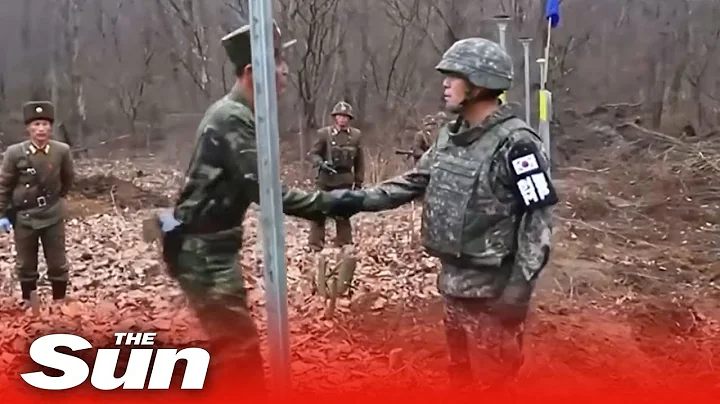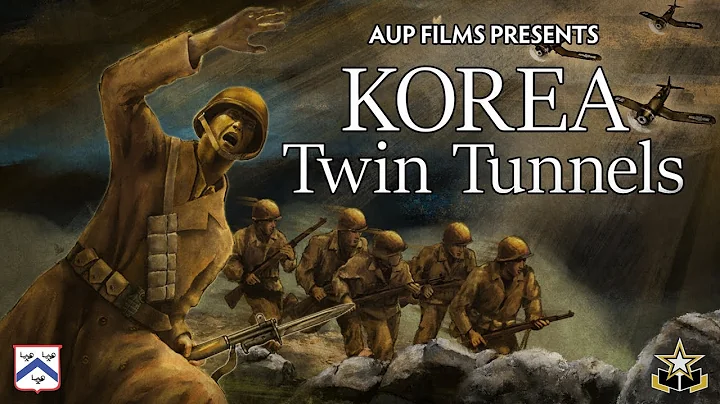After the Second World War, North Korea was occupied by the United States and the Soviet Union respectively with the "38th Parallel" as the dividing line. Since then, the "38th Parallel" has divided North Korea into two parts. After North and South Korea established their respective political powers, both sides were very eager to cross the "38th Parallel" and occupy the entire territory of North Korea.

After the outbreak of the Korean War, the "United Nations Army" once crossed the "38th Parallel" in an attempt to push the front to the edge of the Yalu River and occupy the entire territory of North Korea by force. After the Incheon landing, the then Commander-in-Chief of the "United Nations Army" MacArthur even declared arrogantly: "The 38th Parallel is just a latitude line, and no force can prevent the United Nations Army from crossing it." However, in fact, the "United Nations Army" Under the attack of the volunteer army , they suffered repeated defeats and even retreated to near the "37th line". Since then, although the "United Nations Army" has launched repeated attacks, it has always been able to stabilize the front near the "38th Parallel".
After the offensive ended in the autumn of 1951, the "United Nations Army", which had suffered many disastrous defeats, no longer dared to advance, and even built three lines of defense south of the "38th Parallel" for defense. All this shows that the Volunteer Army has completely occupied the initiative on the Korean battlefield, forcing the enemy to change from strategic offense to strategic defense. At the same time, the Volunteer Army also adjusted its previous tactics and began to focus on positional warfare to attack the enemy.
In the spring of 1952, there were many signs that the enemy was likely to launch a new offensive again, and the main direction of the enemy's attack this time was likely to be the front line of the Five Sacred Mountains, an important support point of the Volunteer Army in the middle line. In order to build a line of defense as soon as possible and thus seize the initiative in the war, the 15th Army of the Volunteer Army was ordered to go to the front line of the Five Sacred Mountains. After the 15th Army arrived at the front line, it not only built a defense fortification mainly consisting of tunnels, but also continuously killed and wounded the enemy through " cold gun and cold gun movement ", leaving the enemy in such a state of disarray that the enemies in the forward position did not even dare to go to the toilet.

However, the enemy also has an advantage, that is, the ferocious firepower. The enemy's aircraft and artillery pose a great threat to the volunteers. Since the 15th Army started the "cold gun and cold artillery campaign", the enemies on the front line were suppressed and could not raise their heads, and the enemies began to use the artillery behind to retaliate, causing the 15th Army to suffer some losses. In order to combat the enemy's arrogance and reduce their own losses, the volunteer troops on the front line very much wanted to destroy the US artillery positions. However, the US artillery positions were all located behind the positions, and it was very difficult to find their positions.
As an artillery unit, the 9th Artillery Regiment is more determined than other units to defeat the enemy. Every time they saw the enemy's artillery fire retaliating against the troops attacking the front line, the officers and soldiers of the 9th Regiment hated it and wanted to knock out the enemy's artillery positions with a few shots. Unfortunately, no one knows where the enemy's artillery positions are, and there is no way to use artillery to deal with the enemy. Zhao Gang, the deputy commander of the 9th regiment, also wanted to take out the US artillery positions. Whenever he had time, he would think of ways to know the location of the artillery positions. Just thinking about it, Zhao Gong suddenly had a flash of inspiration: "The reason why it is impossible to know the location of the enemy's artillery positions is because the artillery positions are far behind the enemy's rear. The reconnaissance unit cannot operate behind the enemy's rear for a long time, so naturally it cannot be found. Artillery position. If you can send someone to pretend to be an American soldier, can you deceive the enemy? "
Zhao Gong also knew that his idea was very bold. The scouts he sent could be said to be very dangerous. Once discovered by the enemy, The consequences could be disastrous. In the end, he reported the plan to Qin Jiwei, commander of the 15th Army. After approval, Zhao Gong immediately selected candidates for the mission in the 9th Regiment. In the end, he selected three people, namely Qi Zizhen, deputy company commander of the 8th company, Li Fengju, the regiment logistics assistant, and Lin Peiyao, platoon leader of the 2nd battalion.

These three people are all scouts and are very good at observing and searching for enemy intelligence. After selecting the people, Zhao Gong personally worked with them to study the search scope of the operation, the entry and exit routes, and how to deal with unexpected situations.In order to understand the situation in South Korea, he also specially invited old men from South Korea to introduce the situation in detail, and arranged for them to conduct various drills to analyze possible accidents.
15 Army also specially sent US military helmets, military uniforms, telescopes, mine detectors , compasses , maps and Thompson submachine guns , etc., so that the three of them could dress up more like US soldiers. In order to be able to deal with the enemy, the three people also learned some simple English and Korean so that they could have some simple conversations with the enemy. After a period of practice, the three of them have slowly prepared everything, and the action is about to begin.
Late one night, Zhao Gong personally took 6 scouts and 2 infantry squads and sent Qi Zizhen and three others to the enemy's forward position. The road ahead will only depend on these three warriors. After the three people left the main force, they found a hidden spot, cut through the enemy's barbed wire, and then penetrated deep into the enemy's rear without anyone noticing. In the next few days, the three people traveled across mountains and rivers, through mountains and jungles, and continued to move behind the enemy's rear. The three people conducted a total of five days and nights of exploration, and the area of activity was about 20 kilometers in radius. In the past few days, they had been working day and night, passing through many enemy checkpoints, and identified 17 enemy artillery positions, with a total of about 99 cannons, 3 artillery command posts and 3 warehouses. It was recorded on the military map that I carried with me.

Afterwards, the three people returned to their position smoothly and handed the map to Zhao Gang. A few days later, according to the locations marked on the map, the 15th Army concentrated more than 60 artillery pieces and launched a surprise attack on the enemy's artillery positions. In the blink of an eye, the enemy's artillery positions were caught in a sea of fire. The losses were very heavy, and they had to stop bombing the forward positions of the 15th Army.





















